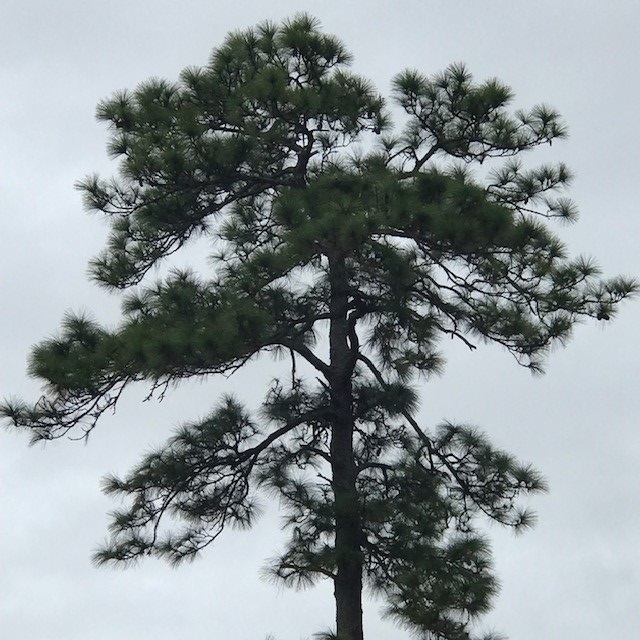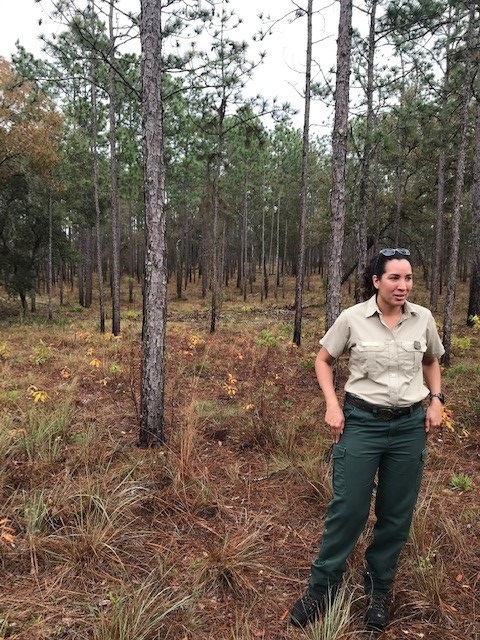A part of National Forest Foundation’s Treasured Landscapes work on the Ocala National Forest includes focusing community stewardship toward improving forest health. These collaborative efforts support specific ecologic goals for an important and vastly diminished forest type.
The stately Longleaf pine is the longest lived of the southern pine species. Throughout most of their range, Longleaf pines can reach 250 years in age, although trees older than 450 years have been documented. The longleaf is a beautiful tree, with lower branches that are rolling and graceful and laden with large cones. Its long needles distinguish it among all other pines and give it its common name.
December can be a nice time to find yourself in a recovering Florida Longleaf pine forest. Two dedicated Forest Service staff who are intimately engaged in restoration efforts - Jared Nobles, a Zone Silviculturist and Antoinette "Tonee" Davis, a Natural Resource Specialist on the Ocala accompanied me on our visit. It had rained overnight and was still a grey and misty morning with the Sunshine state’s namesake not beating down as we made our way through areas that had been treated in 2018/2019.

We observed various stages of restoration conversion – all coming together to transition this landscape to an open, sunny forest of tall, majestic, mixed-age Longleaf pine trees, diverse native groundcover, and midstory that can serve as a healthy functioning ecosystem once again. Improved resiliency, function, and condition of the Longleaf pine forest on the Ocala will support abundant native wildlife species associated with this ecosystem.
In chorus with Longleaf pine restoration, we are expanding critical habitat for the Red-cockaded woodpecker (RCW), a federally listed endangered species, and hopefully moving closer to the ultimate goal of its delisting. The bird is considered a ‘keystone’ species, playing an important role in the intricate web of life of southeastern pine forests. One of the best indicators for a healthy Longleaf pine forest ecosystem is the health of RCW that are so vital to maintaining the forest’s delicate balance.

This finicky bird distinctly prefers mature Longleaf stands (with pines at least 60 years old) and many other species in this ecosystem depend on this small, black and white woodpecker with a ladder of stripes up its back and a distinctive white patch on its cheeks. Priority areas on the Ocala National Forest in central Florida have a core of excellent RCW habitat (from previous treatment activities) surrounded by a patchwork of fair to poor habitat. The Ocala’s RCW management plan is to continue expanding outwards from this habitat core, converting fair and poor habitat to quality RCW habitat.
As we walked through the forest, I thought I could hear the high pitched notes, rattling and quiet drumming of the red-cockaded woodpecker. Perhaps a good sign of a recovering species and an essential melody that enhances a healthy Longleaf pine forest symphony. The National Forest Foundation, the Ocala National Forest and community partners are working to restore these two endangered species through comprehensive restoration of longleaf pine on this treasured National Forest.

